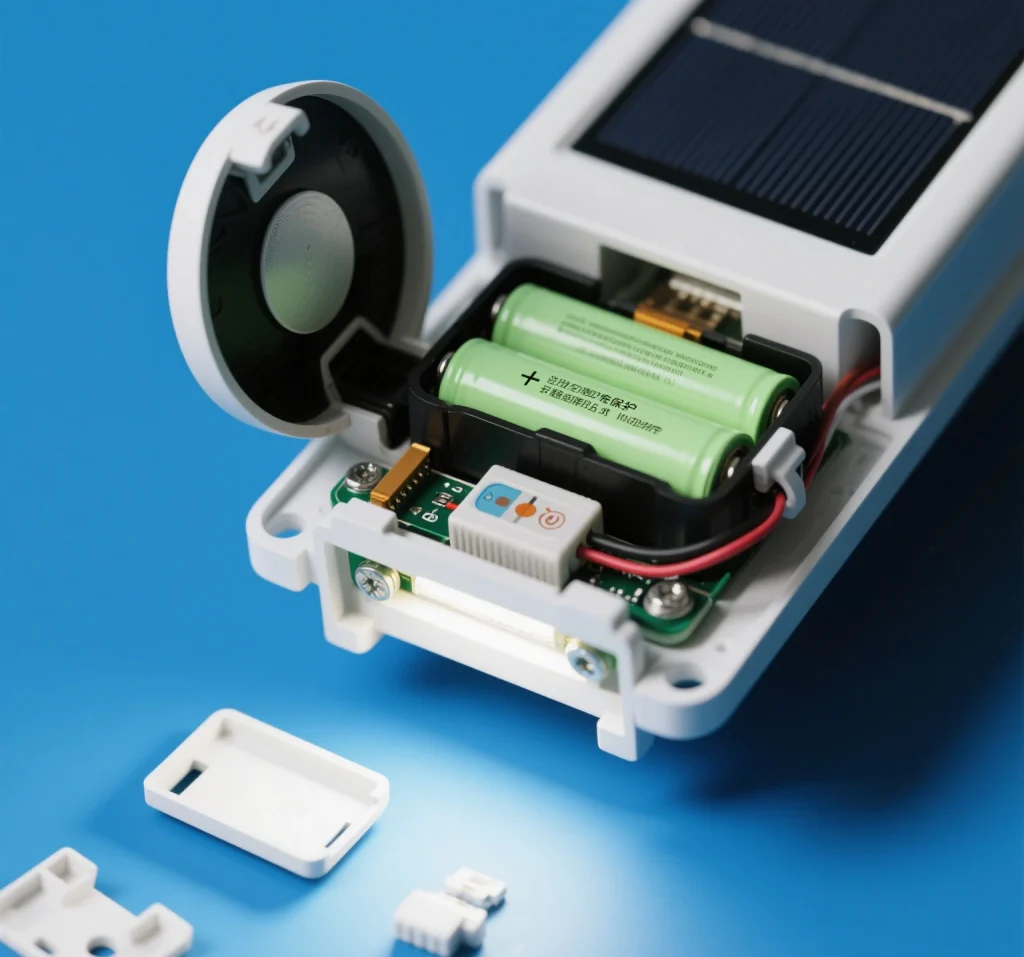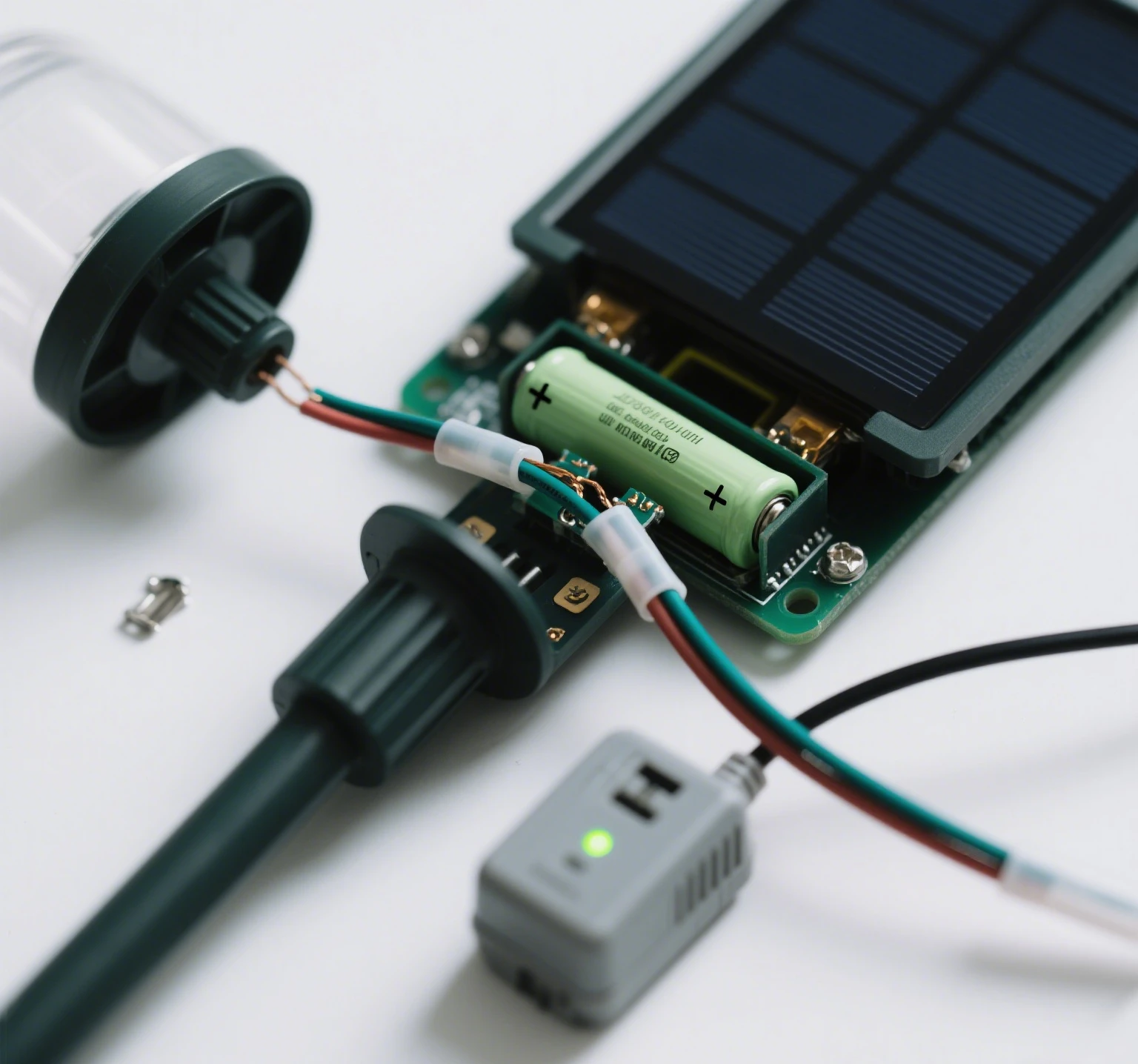Solar lights have become a cornerstone of sustainable lighting, harnessing solar energy to illuminate homes, streets, and public spaces. At the core of these systems lies the battery, which stores energy for use when sunlight is unavailable. However, not all batteries are created equal. Lead-acid batteries and lithium batteries dominate the market, each with distinct characteristics affecting lifespan, endurance, and safety. Why are batteries often considered the “weak link” in solar lighting systems? This article compares lead-acid and lithium batteries, exploring their differences in performance, cost, and safety to help you choose the best option for your solar lighting needs.

The Role of Batteries in Solar Lighting Systems
Solar lighting systems rely on batteries to store energy generated by solar panels during the day for use at night or during cloudy periods. The battery’s performance directly impacts the system’s reliability, making it a critical component. Two primary battery types—lead-acid and lithium—are commonly used, each with unique advantages and drawbacks.
What Are Lead-Acid Batteries?
Lead-acid batteries are one of the oldest and most established battery technologies. Widely used in early solar lighting systems, they consist of lead plates submerged in an electrolyte solution of sulfuric acid. Their affordability and reliability have made them a staple in off-grid applications.
- Key Features: Heavy, bulky, and relatively inexpensive, lead-acid batteries are known for their robustness in certain conditions.
- Types: Flooded lead-acid (FLA) and sealed lead-acid (SLA), including absorbed glass mat (AGM) and gel variants, are common in solar applications.
- Applications: Used in large-scale solar lighting systems, such as streetlights and rural electrification projects.
What Are Lithium Batteries?
Lithium batteries, specifically lithium-ion and lithium iron phosphate (LiFePO4), are newer technologies gaining popularity in solar lights. They use lithium compounds to store and release energy, offering higher efficiency and compactness compared to lead-acid.
- Key Features: Lightweight, compact, and highly efficient, lithium batteries are designed for modern, portable solar lighting systems.
- Types: LiFePO4 is preferred for solar applications due to its stability and safety, while lithium-ion is common in smaller devices.
- Applications: Ideal for residential solar lights, portable lanterns, and high-performance street lighting.
Why Are Batteries Considered the Weak Link?
Batteries are often the first component to fail in solar lighting systems due to factors like limited lifespan, sensitivity to temperature, and maintenance requirements. Poor battery performance can lead to reduced illumination time, system downtime, or complete failure, undermining the reliability of solar lights. Comparing lead-acid batteries and lithium batteries reveals why one may outperform the other in specific scenarios.
Lifespan: Lead-Acid vs. Lithium
The lifespan of a battery is measured in charge cycles—the number of times it can be fully charged and discharged before its capacity significantly degrades.
Lead-Acid Battery Lifespan
Lead-acid batteries typically last 300-500 charge cycles, translating to 2-5 years in solar lighting systems, depending on usage and maintenance. Flooded lead-acid batteries require regular maintenance, such as topping up electrolyte levels, while sealed variants (AGM and gel) are maintenance-free but still have a limited lifespan.
- Factors Affecting Lifespan: Over-discharging, high temperatures, and irregular maintenance can drastically reduce lead-acid battery life.
- Degradation: Lead-acid batteries lose 0.5-1% of their capacity per month due to sulfation, where lead sulfate crystals form on the plates.
Lithium Battery Lifespan
Lithium batteries, particularly LiFePO4, offer 2,000-5,000 charge cycles, equating to 5-10 years or more in solar lighting systems. Their advanced chemistry minimizes degradation, even under frequent cycling.
- Factors Affecting Lifespan: Lithium batteries are less sensitive to over-discharging but can degrade if exposed to extreme temperatures or improper charging.
- Degradation: Lithium batteries lose only 0.1-0.3% of capacity per month, ensuring longer-term reliability.
Comparison: Lithium batteries last 4-10 times longer than lead-acid batteries, making them a superior choice for applications requiring durability and minimal maintenance.
Endurance: How Long Do They Power Solar Lights?
Endurance refers to a battery’s ability to provide consistent power output, often measured as depth of discharge (DoD)—the percentage of capacity used before recharging.

Lead-Acid Battery Endurance
Lead-acid batteries typically have a DoD of 50%, meaning only half their capacity can be used without damaging the battery. For example, a 100Ah lead-acid battery provides 50Ah of usable energy. This limitation reduces the runtime of solar lights, requiring larger batteries for extended operation.
- Charge Time: Lead-acid batteries take 8-12 hours to fully charge, which can be a bottleneck in regions with limited sunlight.
- Efficiency: Their charge-discharge efficiency is 80-85%, meaning some energy is lost during storage and retrieval.
Lithium Battery Endurance
Lithium batteries support a DoD of 80-90%, allowing nearly full use of their capacity. A 100Ah lithium battery provides 80-90Ah of usable energy, significantly extending the runtime of solar lights.
- Charge Time: Lithium batteries charge in 4-6 hours, making them ideal for areas with variable sunlight.
- Efficiency: With a charge-discharge efficiency of 95-98%, lithium batteries maximize energy utilization.
Comparison: Lithium batteries offer nearly double the usable capacity and faster charging, ensuring longer and more reliable illumination for solar lighting systems.
Safety: Lead-Acid vs. Lithium
Safety is a critical concern in solar lighting systems, as batteries are often installed in residential or public spaces.
Lead-Acid Battery Safety
Lead-acid batteries pose several safety risks:
- Gas Emissions: Flooded lead-acid batteries release hydrogen gas during charging, requiring ventilation to prevent explosions.
- Acid Spills: Improper handling can lead to corrosive acid leaks, posing environmental and health hazards.
- Weight: Their heavy weight (20-50 kg for typical solar applications) increases installation risks and costs.
Sealed lead-acid batteries (AGM and gel) mitigate some risks by eliminating gas emissions and spills but remain bulky and less safe than lithium alternatives.
Lithium Battery Safety
Lithium batteries, especially LiFePO4, are designed with safety in mind:
- Thermal Stability: LiFePO4 batteries have a higher thermal runaway threshold (above 500°C) compared to lead-acid (around 300°C), reducing fire risks.
- No Emissions: Lithium batteries produce no gases, making them suitable for enclosed spaces.
- Compact Design: Weighing 50-70% less than lead-acid batteries, they are easier and safer to install.
However, lithium-ion batteries (non-LiFePO4) can pose risks if overcharged or damaged, though modern battery management systems (BMS) mitigate these concerns by regulating voltage and temperature.
Comparison: Lithium batteries, particularly LiFePO4, are safer due to their stability, lack of emissions, and integrated safety features.
Cost Considerations
Cost is a significant factor when choosing between lead-acid and lithium batteries.
- Lead-Acid Batteries: Priced at $50-150 per kWh, lead-acid batteries are initially cheaper. However, their shorter lifespan and frequent replacement increase long-term costs.
- Lithium Batteries: Priced at $200-400 per kWh, lithium batteries have a higher upfront cost but lower total cost of ownership due to their extended lifespan and efficiency.
For example, a solar lighting system requiring a 100Ah battery may cost $100 for a lead-acid battery (replaced every 3 years) versus $300 for a lithium battery (lasting 8 years). Over a decade, lithium batteries often prove more cost-effective.
Environmental Impact
Both battery types have environmental implications:
- Lead-Acid Batteries: Contain toxic lead and sulfuric acid, requiring careful recycling to prevent environmental contamination. Recycling rates are high (95% in developed countries), but improper disposal remains a concern.
- Lithium Batteries: Lithium mining has environmental impacts, but LiFePO4 batteries are less toxic and more recyclable than lead-acid. Their longer lifespan reduces the frequency of replacements, lowering overall environmental impact.
Innovations in Battery Technology
The solar lighting industry is benefiting from advancements in battery technology:
- Hybrid Batteries: Combining lead-acid and lithium chemistries to balance cost and performance.
- Solid-State Batteries: Emerging lithium-based technologies promising even higher safety and energy density.
- Smart BMS: Advanced battery management systems optimize charging, extend lifespan, and enhance safety in lithium batteries.
- Recycling Improvements: New processes are improving the recyclability of both lead-acid and lithium batteries, reducing environmental impact.
These innovations are making lithium batteries increasingly viable for solar lighting systems, while lead-acid batteries remain relevant for budget-conscious applications.
Choosing the Right Battery for Your Solar Lights
Selecting between lead-acid and lithium batteries depends on your specific needs:
- Budget: Lead-acid batteries are ideal for low-cost, large-scale installations where maintenance is feasible.
- Performance: Lithium batteries are better for high-performance solar lights, especially in residential or portable applications requiring long runtime and minimal maintenance.
- Safety: Lithium batteries, particularly LiFePO4, are safer for enclosed or public spaces.
- Environmental Goals: Lithium batteries offer a greener option due to their longevity and recyclability.
Consulting a solar installer or using a solar calculator can help you assess your energy needs, site conditions, and budget to make an informed choice.
Conclusion
While batteries may be seen as the “weak link” in solar lighting systems, choosing the right type can significantly enhance performance and reliability. Lead-acid batteries offer affordability but fall short in lifespan, endurance, and safety compared to lithium batteries. With their superior efficiency, longevity, and safety features, lithium batteries, especially LiFePO4, are increasingly the preferred choice for modern solar lights. By understanding these differences, you can select the best battery to power your sustainable lighting solutions, ensuring a brighter, greener future.


Leave a Reply